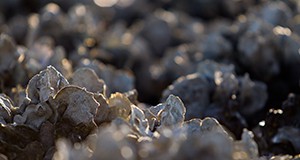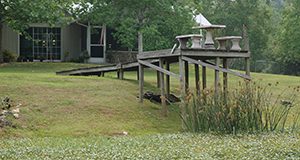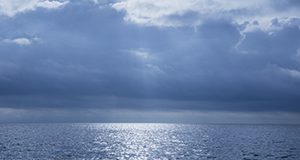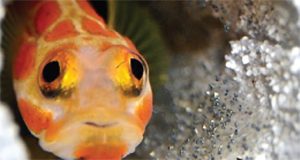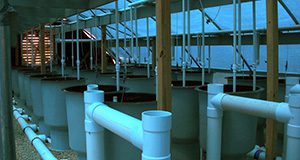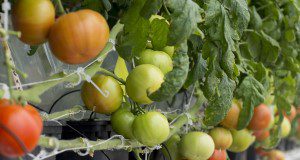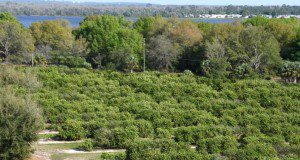Ambrosiodmus minor is an invasive ambrosia beetle in the southeastern United States, including Florida. It is considered of low importance because evident economic or ecological impacts have not been observed. However, it is associated with a unique ambrosia fungus, Flavodon subulatus, which causes rapid wood rot. Wood decay caused by this association between Ambrosiodmus and Flavodon is increasing in dead trees across the introduced range, especially in Florida. This 4-page fact sheet written by Demian F. Gomez and Jiri Hulcr and published by the UF/IFAS School of Forest Resources and Conservation offers guidance in identification of the pest, the symptoms of an infestation, and explanation of the insect’s biology. In addition, we provide an updated overview of contemporary management and monitoring of the species.
https://edis.ifas.ufl.edu/fr434
Tag: School of Forest Resources and Conservation
Oyster-Predator Dynamics and Climate Change
Oysters are one of the most important natural resources found in coastal and estuarine areas of Florida, but some Florida oyster populations appear to be declining. One possible driver of oyster population decline is increased mortality from oyster predators, including marine snails. But other environmental factors, such as changes in temperature or salinity, may also affect oysters. This 5-page fact sheet written by Gabrielle Love, Shirley Baker, and Edward V. Camp and published by the UF/IFAS School of Forest Resources and Conservation, Program in Fisheries and Aquatic Sciences describes how a changing climate may affect oysters directly but also indirectly by affecting their predators.
https://edis.ifas.ufl.edu/fa228
Spatial Measurements on USGS Topo Maps

United States Geological Survey topographic maps provide a variety of geospatial measurement tools thanks to their built-in georeferencing capabilities. Georeferencing facilitates display of geographic coordinates and measurement of distances, perimeters, and areas on PDFs using the measure tools built into Adobe Reader and Adobe Acrobat. This 7-page fact sheet written by Hartwig H. Hochmair and published by the UF/IFAS School of Forest Resources and Conservation explains and showcases the use of these geospatial readout functions. It also provides background information about and assistance with estimating point coordinates on the Universal Transverse Mercator grid cast on USGS topographic maps as an optional layer.
https://edis.ifas.ufl.edu/fr433
An Introduction to USGS Topo Maps
Topographic maps provide both a detailed and accurate representation of cultural and natural features on the ground and a quantitative representation of relief, usually using contour lines. They can be used to address spatial questions in disciplines related to natural resources, hydrology, forestry, agriculture, or ecology. In 1879, the United States Geological Survey began to map the topography of the United States, producing new map versions of each area at semi-regular time intervals. US Topo maps are the current generation of USGS topographic maps. Unlike traditional topographic maps, the US Topo product is automatically generated from national map databases with topographic maps and produced every three years for all 48 of the contiguous United States, Hawaii, and the United States territories. They are published as freely available geospatial PDF documents that facilitate coordinate readings and spatial measurements (e.g. distance, area) through built-in georeferencing technology. This 7-page fact sheet written by Hartwig H. Hochmair and Adam R. Benjamin and published by the UF/IFAS School of Forest Resources and Conservation focuses on US Topo quadrangle download procedures and layer structure.
https://edis.ifas.ufl.edu/fr342
Facilitating Community Change: Lessons from Climate Adaptation to Guide Extension Engagement
This 19-page publication written by Martha Monroe and Annie Oxarart and published by the UF/IFAS School of Forest Resources and Conservation provides Extension faculty in Florida with useful strategies to help communities understand, discuss, evaluate, and recommend potential solutions to current and future problems. While much of the research behind these strategies has been conducted in the context of climate adaptations in vulnerable communities and ecosystems, such as coastal fisheries, rainfed agriculture, and floodplain cities, the principles that underlie these processes are universal. The same strategies and guidelines can be tailored for any issue that requires the public to become more informed, generate options, and understand advantages and disadvantages of various choices. In these situations, Extension agents can facilitate a process of thoughtful deliberation to help communities find common ground and move toward finding solutions.
https://edis.ifas.ufl.edu/fr430
FRAGSTATS: A Free Tool for Quantifying and Evaluating Spatial Patterns

Human activities such as urbanization and agriculture have triggered rapid land cover change, resulting in the loss of natural ecosystems. Land managers managers seeking to plan effectively for future land use that preserves biodiversity and the valuable services provided by natural ecosystems must understand land cover change and its environmental impacts. Quantifying patterns of land cover change objectively in order to understand them can be difficult without the proper resources, however. This 9-page fact sheet written by Benxin Chen and Basil V. Iannone III and published by the UF/IFAS School of Forest Resources and Conservation introduces one such resource, a free software called FRAGSTATS. Readers will learn to create input data, run the FRAGSTATS software, and interpret outputs. A few basic concepts of landscape ecology and GIS are included, but this fact sheet is intended for readers with at least some GIS knowledge.
https://edis.ifas.ufl.edu/fr431
A Beginner’s Guide to Water Management—Common Aquatic Birds Using Florida Lakes
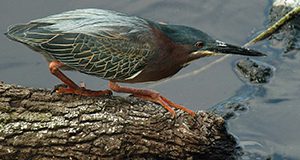
Florida LAKEWATCH is a citizen scientist program that monitors Florida's lakes. Since it was established in 1991, Florida LAKEWATCH has worked with thousands of volunteers to collect water quality data on more than 2,700 aquatic systems in Florida. It is the most comprehensive and longest-running water quality data source in the United States, if not the world. This 18-page circular written by Mark V. Hoyer and published by the UF/IFAS Program in Fisheries and Aquatic Sciences of the School of Forest Resources and Conservation describes Florida LAKEWATCH's volunteer aquatic bird-monitoring program. Citizen volunteers can provide a comprehensive and intimate understanding of birds and their interactions with Florida lake systems, helping to detect the changes in the types and numbers of birds using lakes that may indicate important natural or human-caused environmental trends. Whether you want to identify birds you’ve spotted or take an active role in the management and conservation of Florida's natural resources, this circular can help you learn the basics.
https://edis.ifas.ufl.edu/fa229
The American Horseshoe Crab (Limulus polyphemus)
American horseshoe crabs (Limulus polyphemus) look prehistoric and in fact really have not changed very much in the 200 million years they have been around. This 3-page fact sheet written by Savanna Barry, Holly Abeels, and Shelly Krueger and published by the UF/IFAS Program in Fisheries and Aquatic Sciences, School of Forest Resources and Conservation tells the story of these interesting and valuable “living fossils,” including their importance both to ecology and human medicine. It provides tips on how to find horseshoe crabs and a few ways you can help them.
https://edis.ifas.ufl.edu/sg190
Concepts, History, Principles, and Application of Germplasm Cryopreservation Technology
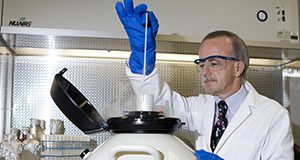
Germplasm refers to the living genetic resource of such biological materials as seeds, pollen, animal sperm, eggs, embryos, and larvae. Cryopreservation maintains these materials at extremely low temperatures. The technology is used in medicine as well as to maintain biological diversity, preserve genetic resources, support breeding programs, and conserve endangered species. This 10-page fact sheet written by Huiping Yang and Terrence R. Tiersch and published by the UF/IFAS School of Forest Resources and Conservation Program in Fisheries and Aquatic Sciences introduces the basic concepts, history, principles, and applications of germplasm cryopreservation technology.
https://edis.ifas.ufl.edu/fa223
Ocean Acidification: pH Variability across Space and Time
The absorption of atmospheric carbon dioxide by the oceans has changed the chemical properties of seawater and made it more acidic all over the world. Florida, with an extensive coastline and deep cultural and economic ties to marine resources, will be directly affected. This 4-page fact sheet written by Lisa Krimsky, Joseph Henry, and Joshua Patterson and published by the UF/IFAS Program in Fisheries and Aquatic Sciences, School of Forest Resources and Conservation focuses on the spatial and temporal variability in oceanic pH and provide an overview of pH variability in Florida's coastal waters.
https://edis.ifas.ufl.edu/fa227
Aquaculture applications of the Family Blenniidae
Marine ornamental fish production is still in its infancy compared with its freshwater counterpart. About 1,800 wild-caught fish species are imported into the United States each year, clear proof of the need for the expansion of marine ornamental production to include new species and families of fish. Distinct behavior and a wide range of colors makes fish from the Blenniidae family, called blennies, a popular choice in the aquarium hobby. These hardy fish are small and rarely aggressive to other reef species and they eat algae and clean tank substrate. This 6-page fact sheet written by Jesse Von Linden, Joshua T. Patterson, Cortney L. Ohs, and Matthew A. DiMaggio and published by the UF/IFAS Program in Fisheries and Aquatic Sciences, School of Forest Resources and Conservation provides a brief overview of the family including description and taxonomy, natural history, culture techniques, a bit about disease challenges, and advice on marketing for ornamental Blennids.
https://edis.ifas.ufl.edu/fa225
Aquaculture Applications of the Family Gobiidae
Marine ornamental fish production is still in its infancy compared with its freshwater counterpart. About 1,800 wild-caught fish species are imported into the United States each year, clear proof of the need for the expansion of marine ornamental production to include new species and families of fish. The family Gobiidae is the fourth most imported family of marine ornamental fish. Gobies can be easily housed with a variety of other species of fish. Several have qualities that lend themselves to aquarium life. Some clean other fish and others sift the sand bed. Many naturally perch on the rockscape or corals, spending their time beautifying their surroundings with their bright colors and intriguing behavior. This 7-page fact sheet written by Jesse Von Linden, Joshua T. Patterson, Cortney L. Ohs, and Matthew A. DiMaggio and published by the UF/IFAS Program in Fisheries and Aquatic Sciences, School of Forest Resources and Conservation provides a brief overview of the family including description and taxonomy, natural history, culture techniques, a bit about disease challenges, and advice on marketing for ornamental Gobids.
https://edis.ifas.ufl.edu/fa226
Florida Fishing Guide Requirements Checklist
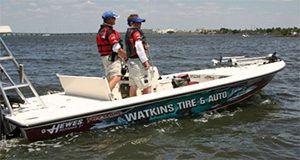
Guides and captains maintaining vessels used for recreational fishing are an important part of coastal economies, but regulations affecting them can be complicated and may differ depending on several factors, including targeted species, number of customers, vessel size, etc. These regulations are often described in multiple locations, since for-hire guides operate at the intersection of multiple state and federal jurisdictions. This 3-page fact sheet written by Elizabeth A. Staugler, Ralph Allen, and Edward V. Camp and published by the UF/IFAS School of Forest Resources and Conservation, Program in Fisheries and Aquatic Sciences summarizes the relevant regulations and requirements.
https://edis.ifas.ufl.edu/fa218
Overview of Commonly Cultured Marine Ornamental Fish
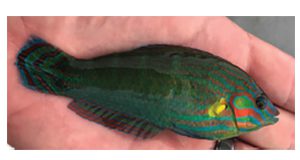
The production of freshwater ornamental fish dominates the ornamental aquaculture industry, yet the small marine ornamentals sector has grown substantially in recent years. This 7-page fact sheet written by Elizabeth M. Groover, Matthew A. DiMaggio, and Eric J. Cassiano and published by the UF/IFAS Program in Fisheries and Aquatic Sciences, School of Forest Resources and Conservation briefly reviews the more common groups of marine ornamental fishes cultured in the United States. As we learn more about marine ornamentals and as aquaculture protocols for marine ornamentals develop and improve, it is possible that more species may become economically feasible to produce and more cultured marine fish may begin to supplement wild-caught stocks in the marine aquarium trade.
https://edis.ifas.ufl.edu/fa224
Opportunities and Obstacles to Aquaculture in Florida
Aquaculture is growing in Florida as it is worldwide, but in Florida aquaculture has not yet reached its substantial potential. To understand why this might be, the University of Florida's Institute of Sustainable Food Systems organized and convened a meeting between small-agency, industry, and academic stakeholders to discuss the opportunities and obstacles to aquaculture in Florida. This 6-page fact sheet written by Edward Camp, Taryn Garlock, and James Anderson and published by the UF/IFAS School of Forest Resources and Conservation, Program in Fisheries and Aquatic Sciences, describes the proceedings of this meeting in the context of the broader scientific literature explaining why aquaculture ventures do and sometimes do not succeed.
https://edis.ifas.ufl.edu/fa221
Indoor Vertical Farming Systems for Food Security and Resource Sustainability
Indoor vertical farming has been gaining increased popularity worldwide as a method of addressing food security while satisfying sustainability needs. This 5-page fact sheet written by Jiangxiao Qiu, Haimanote K. Bayabil, and Yuncong Li and published by the UF/IFAS School of Forest Resources and Conservation provides a comprehensive summary of the current status of indoor vertical farming in the United States and globally, commercial derivatives, major sustainability benefits and limitations and challenges. Learn about the limitations and challenges of the industry as well as the potential benefits both for food security and resource sustainability.
https://edis.ifas.ufl.edu/fr429
Quantum GIS (QGIS): An Introduction to a Free Alternative to More Costly GIS Platforms
Geographic information system (GIS) software packages can be prohibitively expensive, causing many to shy away from mapping and spatial analysis. This 7-page fact sheet written by Jeffry M. Flenniken, Steven Stuglik, and Basil V. Iannone III and published by the UF/IFAS School of Forest Resources and Conservation introduces the reader to a free GIS software package called Quantum GIS (QGIS), walking the reader through simple GIS processes that can be used to visualize spatial patterns of importance to a variety of fields, including natural resources, agriculture, and urban planning. Learn how to create a land-cover map for a county of interest and create heatmaps that illustrate the density of a given attribute (Florida Springs for this example). This publication will benefit those interested in incorporating GIS into their work but who are unable to afford expensive proprietary GIS software packages, as well as anyone interested in learning a new GIS software package.
https://edis.ifas.ufl.edu/fr428
Fish Population Recruitment: What Recruitment Means and Why It Matters

Recruitment, the process by which small fish transition to older, larger life stages, is probably the most important process that regulates populations of fish, but it is complicated to understand. This 6-page fact sheet written by Edward V. Camp, Robert N. M. Ahrens, Angela B. Collins, and Kai Lorenzen and published by the UF/IFAS Program in Fisheries and Aquatic Sciences, School of Forest Resources and Conservation explains the recruitment process in fish populations and why recruitment is so important to fisheries science and management.
https://edis.ifas.ufl.edu/fa222
Ocean Acidification: Calcifying Marine Organisms
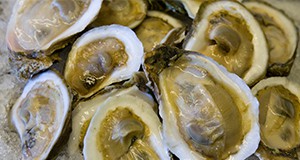
Rising atmospheric carbon dioxide concentration leads to ocean acidification and threatens coastal and marine ecosystems and organisms. This 4-page fact sheet written by Joseph Henry, Joshua Patterson, and Lisa Krimsky and published by the UF/IFAS School of Forest Resources and Conservation, Program in Fisheries and Aquatic Sciences explores the impacts of ocean acidification on calcification, the process corals, bivalves, echinoderms, and planktonic organisms use to build their shells and skeletons. Understanding how ocean acidification affects calcification is important for scientists seeking to determine the real-world implications and impacts of ocean acidification on some of the most important species in the marine environment.
https://edis.ifas.ufl.edu/fa220
Timber Inventory: A Primer for Landowners
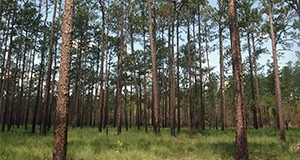
This 7-page fact sheet written by John Dooner and Michael Andreu and published by the UF/IFAS School of Forest Resources and Conservation outlines a process called timber cruising, surveying timber inventory to estimate the current volume and value of a timber stand. The authors explain the process of timber cruising from initial tree-level measurements to the final total stand-level estimates and various methods for conducting the cruise.
https://edis.ifas.ufl.edu/fr426

